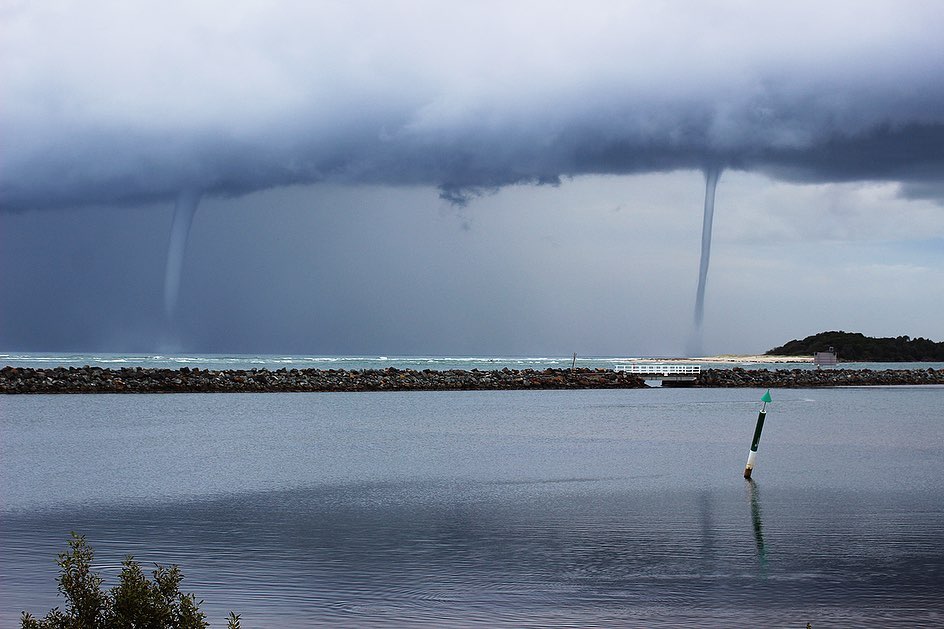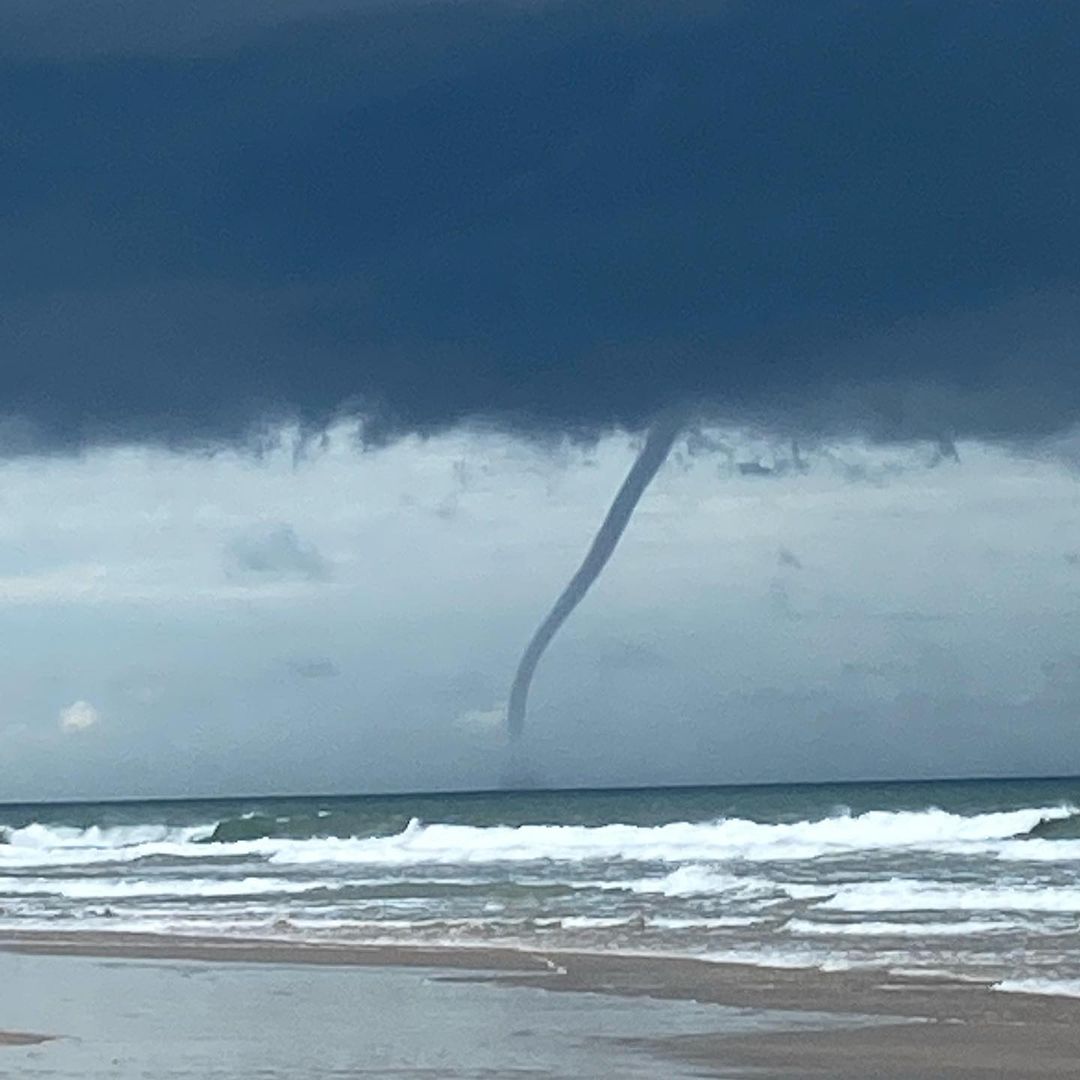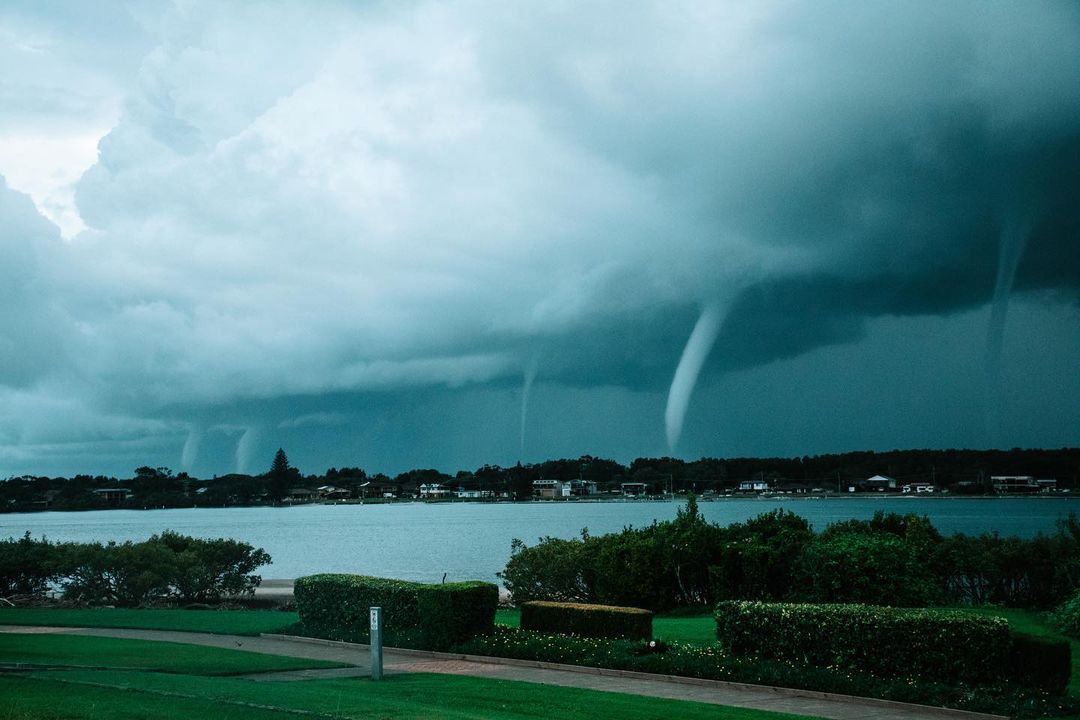What's the deal with these waterspouts: are they tornadoes or not?
No doubt you've all seen the amazing pics and footage of waterspouts off the NSW coast on Tuesday – but what exactly are they and why do they form?
It turns out there are actually two types of waterspouts.
"Waterspouts can be tornadic and non-tornadic," Weatherzone meteorologist Ben Domensino explains.

Image: "The property boasts extensive ocean and spout views". Source: LJ Hooker Harrington / Instagram.
"One type is basically a tornado linked to an intense thunderstorm cloud which often has characteristics of rotation istelf.
"A tornadic waterspout forms over water, or moves out over water after forming, and can be very dangerous.
"The waterspouts that we saw off the NSW coast on Tuesday were non-tornadic."
So how did they form?
"They were formed by cold air moving over relatively warm Tasman Sea water, which casued the air to rapidly rise and begin to rotate forming the funnels that we saw.
"It can be pretty turbulent if you're in a boat beneath the spouts, but they generally don't generate strong enough winds to cause serious damage."

Image: Anyone for a spot of spout surfing? Source: @oldbarbs on Instagram.
In simple terms, the waters off the Mid North Coast where most of the spouts were spotted are still pretty warm for May - around 22°C or 23°C.
When upper-level cold air moved off the coast on Tuesday, conditions became perfect for spout formation as air ascended rapidly due to the contrast between the warm ocean and cold upper-level air.

Image: People thought they were spouting rubbish when they said there were five watery funnels offshore. Source: Kirrajane00 / Instagram.
So the spouts won't hurt you, or not much anyway. They're quite common too. Waterspouts happen most years along the NSW coast, and there could be more waterspouts forming on Wednesday.
We'll keep you posted if we hear of any more "whirl-pillars", as 19th-century sailors used to call them.